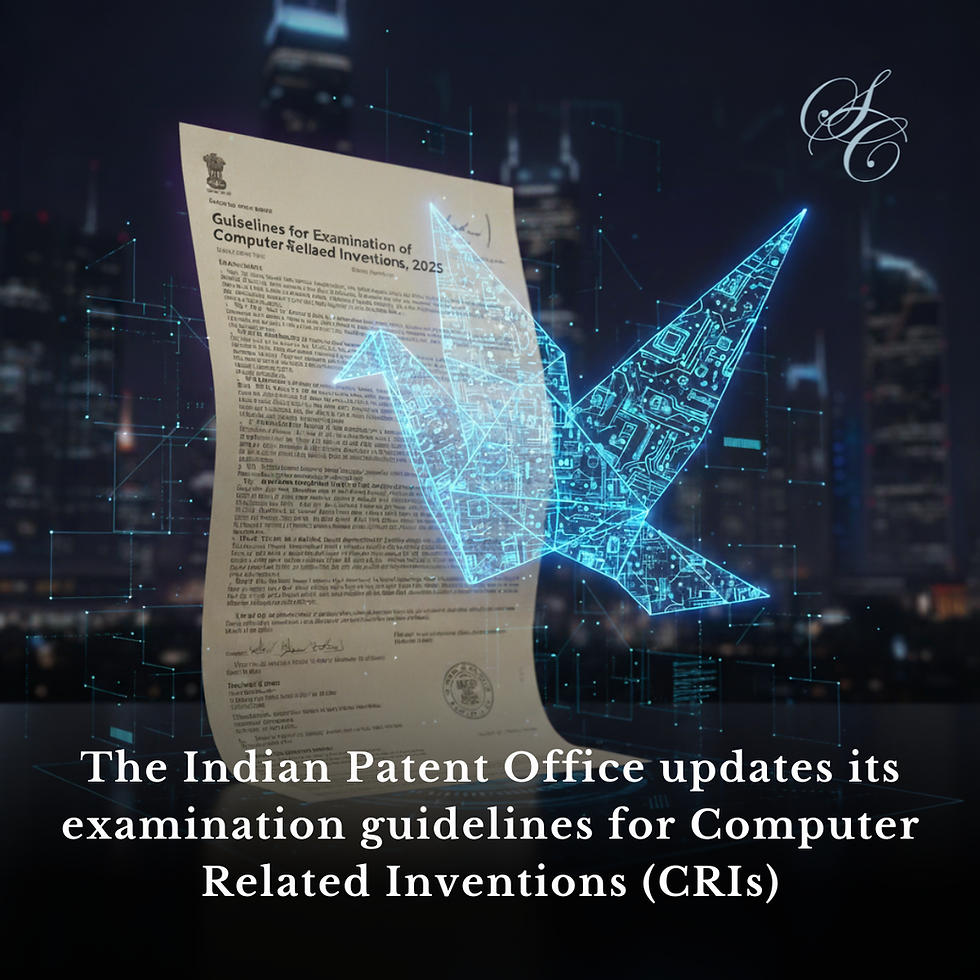FAIR DEALING : A BALANCING BEAM BETWEEN EXCLUSIVITY AND PUBLIC INTEREST
- Sarwajeet Singh
- Jan 18, 2022
- 4 min read
The law of copyright focuses on protecting a creator’s rights in original literary, dramatic, musical and artistic works, cinematograph films and sound recordings. It also confers rights on the copyright holder against unauthorised reproduction, communication to the public, adaptation and translation of his/her work. Such protection, however, is not absolute, but comes with certain confines keeping in mind the larger public interest. One such limitation to ownership in a copyrighted work is carved by the Doctrine of “Fair Dealing”.
While the term “fair dealing” finds mention in the Copyright Act, 1957 (“Act”), which is the law governing copyright in India, it has not been defined by the legislature, often leading to disputes concerning the ambit of this term. While dealing with exceptions to copyright infringement, the Act refers to the term “fair dealing” to exempt certain acts from the ambit of copyright infringement. These include use of copyrighted works for the purposes of private or non-commercial personal use, research, criticism or review, reporting current events, current affairs or publicly delivered lectures in media, etc.
Courts in India have, time and again, tried defining the concept of fair dealing. The interpretation of the Doctrine of Fair Dealing traces its roots to the year 1934 when two points constituting “unfair dealing” were laid down by the court in an attempt to negatively define fair dealing in the case of Kartar Singh Giani v. Ladha Singh. The court ruled that (1) in order to constitute unfairness, there must be an intention to compete and to derive profit from such competition, and (2) unless the motive of the infringer was unfair/ improper, the dealing would be fair. The Kerala High Court, in 1996, in the case of Civic Chandran v. C Ammini Amma, while deciding whether a parody would fall within the scope of fair dealing, held that, while criticism is an exception to copyright infringement, “intention” behind a parody must be considered. If the intent is to exploit the goodwill of an original work, that would amount to infringement.
Over time, the definition of fair dealing has evolved through judicial interpretation. The Delhi High Court in the 2011 case of Super Cassettes Industries Ltd. v. Hamar Television Network Pvt. Ltd & Anr. provided thirteen broad guidelines on fair dealing. The court was of the view that, it is neither possible, nor advisable, to determine the exact meaning of the word “fair dealing” since it is not a question of law, but of fact. It opined that the circumstances surrounding each case need to be examined and that both quantitative and qualitative tests must be applied to determine a question of fair dealing. It also noted that mere commercial use does not make the use unfair, and that “intention” plays an important role in determining whether use is fair or not.
Courts in India have adopted a liberal approach in identifying cases of ‘fair dealing’, often interchangeably using the term with the US concept of “fair use” that permits limited use of copyrighted works without having to first acquire permission from the copyright holder. It is also often argued that the Doctrine of Fair Dealing protects the fundamental right of freedom of expression under Article 19(1) of the Constitution of India. The question, however, that still remains is — Where does one draw the line between use that is fair or unfair? In the 2008 case of The Chancellor, Masters & Scholars of the University of Oxford v. Narendra Publishing House, the Delhi High Court stressed that fair use provisions must be interpreted so as to strike a balance between the exclusive rights granted to the copyright holder, and the valid competing interest of enriching the public domain. The court borrowed four factor tests from the United States to ascertain if a particular use of a work is fair and is entitled to protection under fair dealing. These four factors are: (i) The purpose and character of the use; (ii) The nature of the copyrighted work; (iii) The substantiality of the portion used in relation to the copyrighted work; and (iv) The effect on the potential market for, or value of, the copyrighted work.
In light of the evolution of fair dealing, in the celebrated 2016 case of The Chancellor, Masters & Scholars of the University of Oxford & Ors. v. Rameshwari Photocopy Services & Ors., the Division Bench of the Delhi High Court adopted a liberal and socio-economic approach and held that the preparation of ‘course packs’, such as compilation of photocopies of the specific portions of different books, and their distribution to the students by educational institutions does not constitute copyright infringement so long as the inclusion of the works photocopied was justified by the purpose of educational instruction.
Socio-economic development of the country is of paramount importance to the Indian judiciary. While the provision pertaining to “fair dealing” in the statute appears to be fairly narrow and limited in scope, courts in India appear to have adopted a flexible and broad view in interpreting this provision keeping the larger public good in mind. Surely, the Doctrine of Fair Dealing allows the public to use copyrighted works in a fair manner, without taking away the exclusivity in the work conferred on the copyright holder under statute. With the courts’ intervention as guardians of the law, this doctrine is surely a balancing beam between exclusivity and public interest.




Comments